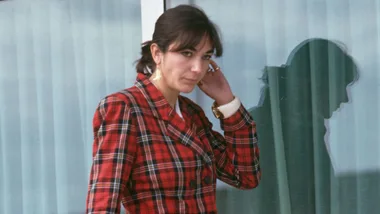In a big hit announcement before the start of pre-polling, Bill Shorten will pledge an A$4 billion boost for childcare, making it cheaper for every family earning up to $174,000.
From July 2020, 887,000 families would benefit from the ALP plan, with some being up to $2,100 better off.
Under the initiative:
-
families with children under five on incomes up to $174,000 would be better off on average by $26 a week – $1,200 a year – per child, the majority of families earning up to $69,000 would get their child care free. This would save them up to $2,100 annually per child.
Families on incomes above $174,000 would continue to receive the same level of support as under current arrangements.
The plan is central to Labor’s campaign on cost of living, with Shorten describing it as “massive cost of living relief for nearly one million families struggling with the costs of childcare”.
“Under the Liberals, the costs of childcare has gone up 28%, costing families using long day care $3,000 more a year.
“Labor will increase the subsidy families receive, we will kick start the process to limit out-of-control child care price increases, and we will review the impact of the system on vulnerable and very low-income families,” Shorten says.
“This is a $4 billion investment in early education, in working parents and in helping families with the rising cost of living. Labor can pay for cheaper childcare for working families because unlike Scott Morrison and the Liberals, we aren’t giving bigger handouts to the top end of town,” Shorten says. The $4 billion cost is over three years.

The main elements of Labor’s plan include:
More child care fee support
The subsidy rate would be increased from 85% to 100% up to the hourly fee cap (currently $11.77 per hour for long day care) for families earning up to $69,000 who meet the activity test. This would make child care free, or almost free, for up to 372,000 families.
The present tapered reduction would be updated to reflect the higher subsidy rate.
Families earning between $69,000 and $100,000 would receive a subsidy rate between 100% and 85%, up to the hourly fee cap.
Families earning between $100,000 and $174,000 would receive a subsidy rate between 85% and 60% up to the cap – an effective increase of 10%.
Families accessing approved Centre Based Child Care, Family Day Care and Outside School Hours Care, including holiday care, would all benefit from the higher subsidy.
Cracking down on excessive fee increases
Labor would give the Australian Competition and Consumer Commission a new role of investigating excessive fee increases and unscrupulous childcare providers. Findings would be made public through mychildcarefinder.
The ACCC would also look at mechanisms to ensure greater controls on child care fee increases to keep child care affordable.
Reviewing the system for vulnerable children
Labor says that in the nine months of the current subsidy system, the number of vulnerable and very low-income families using it has fallen.
“Reports suggest the numbers accessing the Childcare Safety Net have fallen by almost half, from 35,000 to 21,000.
“Labor will urgently review the new system to make sure that vulnerable and low-income families and children aren’t falling through the cracks,” Shorten says.
Labor has already committed to every three-year-old child being able to receive 15 hours of subsidised preschool. It has also said it would extend the current arrangement for four-year-olds.
Shorten says this would create “a two-year program to support the most important years of a child’s development and ensuring our kids don’t fall behind the rest of the world”. For many children, this would be free or nearly free.
Labor is also set to make an announcement on boosting the wages of child care workers, who are among the low paid.
The first votes will be cast at pre-polling stations on Monday, as the campaign ramps up in its final three weeks. Scott Morrison and Shorten will meet in Perth late Monday for their first face-to-face debate.
This article originally appeared on The Conversation.










